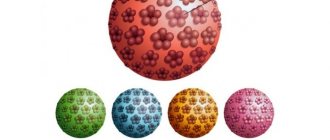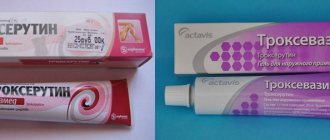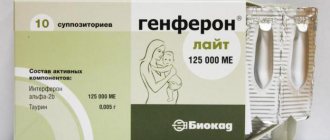Hepatitis B is a dangerous infectious disease that is widely distributed among people of all age groups. It negatively affects the quality of life. Infection occurs through blood, its components, and other biological fluids secreted by humans. Infection can be prevented through timely prevention. Vaccination against hepatitis B is necessary for adults just as it is for children. Thanks to it, the body activates the production of protective antibodies, which can subsequently quickly neutralize pathogens.
Immunization against hepatitis B is mandatory in all developed countries.
This is especially true for employees who come into contact with a large number of people (teachers, health workers). Vaccination is carried out by administering a medication containing a viral protein. It is an active component and, unlike a viable pathogen, is not dangerous. https://youtu.be/2XvEmCEMnBs
Contrary to popular belief, the recombinant hepatitis B vaccine is not capable of causing hepatitis infection. The most effective drugs include Serum Institute, Eberbiovak, Euvax V, Regevak V, Biovac. These vaccines are monovalent; in addition, combination medications are used. Their main advantage is their frequency and wide spectrum of action.
What is a vaccine
Any vaccination requires the introduction into the body of:
- weakened or killed microorganisms - 1st generation of vaccines;
- toxoids (neutralized exotoxins of microorganisms) - 2nd generation of vaccines;
- proteins of viral origin (antigens) - 3rd generation of vaccines.
The substance contained in the hepatitis B vaccine belongs to the latest generation and is a vaccine containing surface antigens s (HBsAg). These antigens are synthesized by recombinant yeast strains.
The genetic structure of yeast cells (Saccharomyces cerevisiae) is recombined, resulting in the formation of a gene that copies the surface antigen of hepatitis B. Then the antigen synthesized by the yeast is freed from the base substance and additional components are added to it.
After the vaccine enters the body, antigens provoke an immune response in the form of the production of immunoglobulins (antibodies corresponding to this antigen). These immune cells are considered the “memory” of the immune system. They remain in the blood for many years, creating the conditions for launching a timely protective response when the real hepatitis B virus enters the body.
In other words, the hepatitis B vaccine familiarizes the immune system with the threats to which it must respond.
However, in order to develop long-term immunity, both children and adults need to receive several vaccinations against hepatitis B (according to the vaccination schedule).
What is hepatitis type B?
The disease is accompanied by the development of an inflammatory process in the liver due to the action of a virus or pathogenic bacteria. There are two types of the disease: acute and chronic. Hepatitis type B is considered an acute viral disease. In the first stages of development, it is difficult to identify, since the symptoms of the pathology resemble ARVI.
In infants, symptoms of the disease may not appear for several years.
The disease lasts 21-50 days, after which, subject to therapeutic intervention, it goes away without a trace. The percentage of deaths = 1. But the danger of the pathology is that it transforms into a chronic form, which is impossible to cope with or can provoke the development of serious illnesses, such as cirrhosis of the liver or the appearance of malignant tumors.
Hepatitis B vaccination schedule
In the countries that were part of the former USSR, they use the hepatitis B vaccination schedule, which has been in use since 1982. According to it, all children are vaccinated against hepatitis B:
- in the first days after birth;
- a month after birth;
- six months after birth.
So, to form a stable and long-term immune response, you need to administer the vaccine 3 times. This rule does not apply to children at risk, i.e. those born to women with hepatitis B. Such children are vaccinated against hepatitis B according to the following schedule:
- On the first day, the first vaccine is administered, as well as antibodies to hepatitis B. The latter are intended to protect the child from the virus before the production of its own antibodies begins in response to the vaccine).
- The second vaccine is administered to the child at 1 month.
- The third vaccine is administered 2 months after birth.
- The fourth vaccination is given to the child at 1 year of age.
Negative reactions
At first, the baby’s arm hurts and other unpleasant symptoms that are temporary in nature may be observed. On the first day, it is worth especially monitoring the patient’s condition in order to notice complications after vaccination in time and prevent their progression. It is extremely rare that vaccination against hepatitis B causes side effects. More often there are local or general reactions in the child’s body, which are an acceptable norm.
Temporary side effects
The body reacts to the virus by increasing body temperature.
Such symptoms are the body’s response to the administration of the drug. Often the baby's lymph nodes located nearby at the injection site become enlarged. Also a temporary side effect is redness of the skin in the area of the injection, associated with an inflammatory reaction that helps the body produce the maximum amount of antibodies. In this case, the patient may experience pain in the arm for some time. After vaccination, the temperature may rise to no more than 37.5 degrees, which can be left alone or the child can be given an antipyretic. If you wet the area where the vaccination was performed, side effects may also occur.
What reactions should you be wary of?
The hepatitis B vaccine should not cause a severe allergic reaction in the child. If the baby constantly cries, a rash appears in the area of the upper limb, there is a lot of redness and swelling, then you should seek medical help as soon as possible.
Yellowness of the skin is a reason to immediately consult a doctor.
Jaundice itself does not serve as a contraindication to vaccination, but if the child turns yellow after the injection, then it is worth seeing a pediatrician, since such a phenomenon deviates from the normal reaction. Occasionally, the following consequences of hepatitis A vaccination in adults and children are recorded, which pose a threat to life and health:
- anaphylactic shock;
- high temperature - more than 39 degrees;
- convulsive state;
- brief fainting;
- sleep problems;
- headaches;
- dizziness.
Staging schemes
There are three vaccination schedules according to which adults are vaccinated against hepatitis B:
- Standard. It includes 3 vaccinations: the first is given on the child’s birthday, the second and third after 1 and 6 months, respectively.
- The second scheme is called accelerated. It involves 4 vaccinations: the first is given on the child’s birthday, the second, third and fourth after 1, 2 and 12 months, respectively.
- The third scheme is applicable in case of emergency immunization , requiring the administration of 4 hepatitis B vaccines to adults on a schedule of 1 week - 3 weeks - 12 months. This vaccination scheme is used in emergency situations, for example, if a person urgently needs to leave for an epidemiologically dangerous area for hepatitis.
Correct use of any of the schemes contributes to the formation of stable and long-lasting immunity in an adult.
The second and third schedules of vaccinations against hepatitis B provide an opportunity to speed up the process at the beginning. This means the formation of the necessary protection by the end of the second (with an accelerated schedule) or by the end of the first (with an emergency schedule) month. The fourth vaccination, carried out a year later, is necessary in order to develop full-fledged long-term immunity.
Preparing the baby for the vaccine
The doctor should check with the parents whether the child has had a cold in the near future, since even a respiratory viral infection after the administration of the vaccine can cause serious complications.
It is advisable not to visit places with large crowds of people 2-3 days before vaccination with your child. A nursing mother should not introduce new foods into her diet, as the reaction of the baby's digestive system can be unpredictable.
It is necessary that the child has a bowel movement on the day of vaccination. You can give your baby a mild laxative or use baby suppositories.
What to do if one of the vaccinations was not given on time
Compliance with the frequency of vaccinations against hepatitis B is a mandatory condition for vaccination. If you miss even one vaccination, immunity will not develop.
If for some reason there is a deviation from the hepatitis B vaccination schedule, then the subsequent vaccination must be given as early as possible .
A minor deviation from the vaccination schedule of several days will not affect the antibody titer, duration and stability of acquired immunity.
If there is a significant deviation from the vaccination schedule (weeks or months), you should consult your doctor regarding further vaccination.
Contraindications
Before the procedure, the child is examined for contraindications. If any abnormalities are detected, the doctor signs a medical exemption, which can be temporary or permanent. Vaccinations in such cases often lead to complications:
- If you have intolerance to baker's yeast, the drug should not be administered. In this case, the body’s reaction to the hepatitis vaccine may manifest itself as an allergy.
- Severe tolerance to the previous vaccination.
- Contraindication is the acute course of any disease.
- If a child was born with insufficient body weight, then the vaccine cannot be given until he gains 2 kg.
- Diathesis (vaccination is given only after the rash subsides) and other allergic manifestations.
- Digestive tract disorder.
- Malignant blood diseases.
- Oncological diseases.
If the vaccination was given to a healthy child, then he will not face any serious complications. If the vaccination was given in the presence of any pathology, there is a high risk of developing serious disorders.
For liver diseases, vaccination is not an absolute contraindication. There are cases when the vaccine is administered during the onset of an acute hepatitis disease (it has not yet been diagnosed) and there is no need to be afraid of the consequences. The procedure does not cause any harm, but, on the contrary, the likelihood of developing cirrhosis of the liver is reduced.
Despite the heated public debate about the necessity/harmfulness of vaccines, it has been convincingly proven that today there is no other protection against dangerous infectious diseases other than vaccinations.
Vaccination against hepatitis B is carried out according to a certain scheme and is one of the most important in a person’s life: this vaccination is given the very first, within 24 hours from the moment of birth.
Few people know what the hepatitis B vaccination schedule is for adults. Meanwhile, this disease is one of the most common in the human population, and every person is at risk of contracting it during their lifetime. Let's consider the hepatitis B vaccination scheme for children and revaccination for adults.
Revaccination scheme
- According to the hepatitis B vaccination schedule, adults should be revaccinated approximately once every 10 years.
- Until what age should this be done? Up to 55 years of age, and if there are additional indications, then until a later age.
- If an adult doubts exactly when the last hepatitis vaccination was given, then you can take a blood test to check for the presence of antibodies to the nuclear and surface protein of hepatitis (HBsAg and HBcAg).
- The number of anti-HBs indicates the resistance of immunity to the hepatitis virus. The vaccine is given when the amount of antibodies is less than 10 units/l - this number indicates an absolute lack of immunity to the virus.
- If the analysis showed the presence of antibodies to the nuclear antigen (anti-HBc), then this indicates the presence of the virus in the blood. In this case, the vaccine is not given.
- Ancillary studies may provide additional information.
- Revaccination against hepatitis B for adults is carried out according to the standard three-vaccination schedule.
Where are newborns vaccinated?
Vaccination does not require special preparation. Before the procedure, the doctor examines the child, measures the temperature, and listens to the chest. If there are no deviations in the child’s health, then a referral is given to the vaccination office.
The injections can be given intramuscularly in the thigh or shoulder. 1 ml of the drug is taken into a special syringe. The drug cannot be injected under the skin, as this reduces the effectiveness of the vaccine and causes a strong local reaction.
For infants and children under three years of age, the drug is injected into the thigh. This is where the muscles that are closest to the skin are best developed. All this helps prevent the occurrence of strong local reactions. For children over three years of age and adults, the injection is given in the shoulder.
Types of hepatitis B vaccines
There are many mono- and polyvaccines against hepatitis B for children and adults. Below are the options for Russian and foreign-made vaccines.
Mono-vaccines of domestic production:
- Microgen;
- Combiotex;
- Regevak.
Mono-vaccines of foreign production:
- NV-VAKS II (Netherlands);
- Engerix V (Belgium);
- Euvax V (South Korea);
- Biovac-B (India);
- Eberbiovak NV (Cuba);
- Shaneak-V (India);
- Gene Vac V (India).
These hepatitis B vaccinations are of the same type, since one dose for an adult contains the same amount (20 mcg) of viral antigens per 1 ml of injection. In an adult, the immunity to many viruses developed in childhood weakens. Therefore, it is recommended to revaccinate against hepatitis B using polyvaccines. Below are the names of popular multivaccines for adults:
- Hep-A+B-in-VAK - for hepatitis B and A (Russia);
- Bubo-M - for diphtheria, hepatitis B and tetanus (Russia);
- Twinrix - against hepatitis B and A (UK).
Release forms and components of vaccines
It is noted that the vaccine against hepatitis B contains a number of the following elements (more details about them can be found in the instructions for use of the drug):
- 20-25 milligrams of surface type antigen;
- 0.5 milligrams of adjuvant, presented in the form of aluminum hydroxide;
- 50 mcg merthiolate (basic type of preservative).
There are a number of drugs that do not contain merthiolate; these are the vaccines that are recommended for use when vaccinating infants.
It was noted that during storage of the vaccine, it separates into a loose white precipitate and a colorless solvent. If the preparation is shaken, it will return to a homogeneous state.
The release of drugs for vaccination is carried out in glass ampoules with one or half doses. A full dose of the drug (1 milligram) is used to vaccinate adults, half a dose (0.5 milligrams) is used to vaccinate infants or small children.
One pack of the drug contains 10 ampoules of hepatitis B vaccine and an insert with instructions for use.
The ampoules should be stored in a room with a temperature range from +2 to +8 degrees. Short-term storage of the drug is allowed at temperatures up to +29 degrees (the period of such storage should not exceed 3 days).
Storing such drugs in the refrigerator, and even more so in the freezer, is strictly prohibited.
If the vaccine is stored in accordance with all rules and regulations, then it is suitable for use for 3 years.
Are there any side effects from vaccination?
Since the vaccination was introduced, the vaccine has been administered to more than 500 million people. There were no serious side effects or complications identified.
Opponents of vaccination usually justify their negative attitude towards it by the danger of the preservative components that make up the drug. In the hepatitis B vaccine, merthiolate (mercury-containing substance) acts as such a preservative.
In some countries, for example in the USA, vaccinations with merthiolate are prohibited, although there is no reliable data on the effect of 0.00005 g (the content in one portion of the vaccine) of merthiolate on human health.
In any case, at the moment it is possible to vaccinate using a drug without a preservative component. Vaccinations Engerix B, Combiotex, and NV-VAX II are produced without merthiolate or with its content of no more than 0.000002 g per dose.
https://youtu.be/2oDVRdlsBY8
Is it possible to immunize using different means?
It often happens that revaccination against hepatitis cannot be carried out with the same substance that was used for primary immunization. International recommendations state that refusal of any recombinant vaccine involves the use of the same one, but from a different manufacturer. However, this does not mean that you can change the product without a special reason. In extreme cases, you can use the same type of substance. The immunity is formed the same, and it is impossible to become infected with the disease.
Sometimes young mothers are also concerned about how their babies tolerate the use of several vaccines at the same time. Such introduction is prohibited if we are not talking about a complex remedy initially. It is prohibited to mix different substances and administer them at the same time, since they can block each other and the child will have a severe reaction to the vaccine and complications instead of immunity.
Medicinal composition
Genetically modified baker's yeast Saccharomyces cerevisiae
All currently existing vaccines have a similar composition. The reason for this is simple: the vaccine is always based on genetically modified baker's yeast Saccharomyces cerevisiae. In the process of genetic engineering modification, the baker's yeast genome is supplemented with a segment of the virus genome, which is responsible for the synthesis of HBsAg, the Australian antigen.
As a result, 90-95% of the mass fraction of the vaccine is occupied by the synthesized antigen. The remaining 5-10% is occupied by the adjuvant, the preservative thimerosal and traces of yeast protein. To enhance the immune response from the body, aluminum hydroxide is usually used as an adjuvant. The role of this component is extremely important, because a vaccine based on a single antigen itself has weak immunogenicity. For this reason, the drug is supplemented with Al(OH)3 adjuvant, thereby achieving an optimal level of formation of viral antibodies.
It is also important to supplement the vaccine with thimerosal, better known under the trade name Merthiolate. Thiomersal (–C9H9HgNaO2S–) is a mercury-containing compound that is used as an antiseptic and antifungal agent. In vaccines, thimerosal is used as an antiseptic and preservative.
https://youtu.be/qvNqHu7b9gk
But there are also certain types of vaccines against hepatitis B, from which all types of preservatives are excluded. There are at least two reasons for this:
- Intolerance to Merthiolate in a small part of the population. In such cases, special instructions for using the vaccine are required. The relative proportion of such cases is only 1:600,000. But there is still a risk of complications, including anaphylactic shock and even death.
- The second reason is of little significance, but is still the reason for the exclusion of Merthiolate from the composition of some vaccines. The use of thimerosal as a vaccine preservative was once controversial and raised widespread concerns. To date, no significant arguments or evidence of the unsuitability of thimerosal for the above purposes have been presented. But still, in response to concerns, in the USA, Europe, and some other countries, merthiolate was excluded from the composition of drugs against hepatitis B.
As a result, the basic composition of the drug looks like this:
- antigen Adjuvant (catalyst);
- preservative-antiseptic;
- traces of yeast proteins in small proportions.
Rules before and after vaccination
How is the first vaccination against viral hepatitis done?
No special preparation is required for vaccination. It is enough to know a few simple rules:
- Do not add new foods to your diet before vaccination.
- If you are prone to allergies, take a course of antiallergic medications. This is done several days in advance and on the recommendation of a doctor.
- Vaccination should be done after thorough hygiene of the entire body. You should not swim for several days after vaccination.
What to do after vaccination?
- do not overfeed the child,
- drink plenty of fluids. Mineral water, dried fruit compote, fruit or green tea,
- walk more in the fresh air, but only if the body temperature does not exceed 37.5 degrees,
- protect the vaccinated patient from communication with strangers and reduce any unwanted contacts,
- if your body temperature rises, you need to go to the hospital and follow all the doctor’s recommendations,
- if necessary, take ascorbic acid and calcium gluconate.
What to do if a patient gets sick after vaccination?
- Incorrect behavior after vaccination could provoke the disease. The infection could have occurred through contact with strangers.
- Initially, the immune system is somewhat weakened and the body becomes susceptible to any harmful microorganisms.
- Do not delay visiting the doctor.
The reaction to vaccination cannot always be predicted. Therefore, if you suspect any unwellness or deterioration in your health, it is better to consult a doctor.
The principle of vaccination
According to studies, it has been established that the duration of the vaccination against the inflammatory process depends on the age of the patient. When vaccinated in infants, it can protect the body for about 20 years. Throughout this time, he will have immunity.
How does the vaccine work:
- During a laboratory blood test, antibodies may not be detected. This happens because the sample with their presence is not always selected,
- examinations are recommended to be carried out at least once every 5 years, after vaccination,
- If a certain amount of antibodies is detected, maintenance of the desired immunity can be carried out 12 months after the study. Some patients are vaccinated once during their lifetime.
When vaccinated, specific antibodies are produced that can resist complex diseases. Should I give several vaccinations at the same time? You should consult your doctor about this. This also applies to the use of Pentaxism together with hepatitis when vaccinating.
Characteristic
This drug is used to immunize the population against hepatitis B category, including children under one year of age and newborns. The regimen consists of 3 or 4 vaccinations, depending on the period in which immunity must be formed. Fully completed vaccination provides immunity from the hepatitis virus for a 20-year period with a probability of more than 97%. In the Russian Federation, the recombinant yeast hepatitis B vaccine is provided free of charge in any clinic to both newborns and adults wishing to undergo scheduled/unscheduled vaccination. Each batch of the drug is tested on animals before being put into use.
The main active component in this vaccine is the surface antigen HBsAg, also called the Australian antigen. It is this that destroys the protein of the hepadnavirus (the virus that causes hepatitis) that has entered the blood. The antigen is created on the basis of a recombinant strain of a species of bread yeast, from which it is subsequently released by physical or chemical methods. This method of producing antigen is quite simple and cheap. The main disadvantage of the method is the presence of yeast protein in the finished suspension at a concentration of about 1%, since bread yeast and its derivatives are strong allergens for almost 2% of people.
If you have a strong reaction to vaccine components or an allergy after the first vaccination, you should discuss changing the drug with your doctor.
The main components of the vaccine:
- HBsAg antigen, 20 μg/ml - the main component of the vaccine;
- aluminum hydroxide, 50 mg/ml;
- merthiolate, 50 μg/ml - preservative.
The standard dosage for children is 0.5 ml of the drug, for adults – 1 ml. Patients on hemodialysis should be vaccinated with a double dose.
Release form
The drug is produced and sold in the form of a liquid suspension for intramuscular injection. The solution is colorless, with a white precipitate that breaks easily when shaken. The drug is produced in glass medical ampoules with a volume of 0.5 or 1 ml, which corresponds to one pediatric and one adult dose. The vaccine is packaged in plastic blisters or cardboard boxes of 10 pieces. The package always contains instructions and a special ampoule knife.
The vaccine is stored in an unopened sealed ampoule with strict adherence to the temperature regime of 3 – 7 °C. The vaccine should not be frozen or placed in direct sunlight. The recombinant yeast liquid vaccine against hepatitis B is quite sensitive to storage conditions - if left at room temperature for more than two days, the drug loses half of its effectiveness. The opened drug is used within one hour or discarded. Frozen ampoules or ampoules with a discolored solution that does not break into sediment should be disposed of without opening.
The ampoule must be opened immediately before vaccination; the opened drug should not be stored for more than an hour.
Application
This vaccine is used to immunize against the hepatitis B virus in both adults and children. Under the right vaccination conditions and the absence of immunodeficiency, the immune response is about 97%. Lasting immunity to the virus lasts for at least 20 years, after which repeated vaccination is required.
There are three hepatitis vaccination schemes:
- standard 0-1-6 of three vaccinations;
- accelerated 0-1-2-12, serves for faster formation of immunity, however, one additional vaccination is required for consolidation;
- emergency vaccination is carried out 2 weeks in advance according to the scheme 0-7-21-12, where the first three numbers indicate the day of vaccination in order, and the last - the final vaccination after 12 months.
The drug can be used on the same day with other vaccines, with the exception of BCG. Also, the recombinant vaccine can be easily replaced with another drug if necessary.
Contraindications to vaccination
Contraindications to vaccination are divided into temporary and permanent. Temporary conditions include infectious diseases, elevated body temperature, low birth weight, or prematurity.
Constants include:
- severe allergic reactions in children to previous vaccination - anaphylactic shock, angioedema, febrile convulsions (see also: causes and symptoms of febrile convulsions in a child);
- yeast allergy;
- some diseases of the nervous system that tend to progress.
Instructions for medical use
Hepatitis B recombinant yeast vaccine Instructions for medical use - RU No. P N000738/01
Date of last change: 06/15/2017
Dosage form
Suspension for intramuscular administration.
The drug contains in 1 ml: 20 μg of recombinant hepatitis B virus surface antigen (HBsAg), 0.5 mg of aluminum hydroxide (Al 3+) and does not contain a preservative - merthiolate or contains 50 μg of merthiolate.
Description of the dosage form
A homogeneous suspension of white color with a grayish tint, without visible foreign inclusions, which separates when standing into a colorless transparent liquid and a loose precipitate of white color with a grayish tint, easily breaking when shaken.
Characteristic
Hepatitis B recombinant yeast vaccine is a protein sorbed on aluminum hydroxide (HBsAg), synthesized by a recombinant yeast strain Saccharomyces cerevisiae and/or Hansenula polymorpha and containing antigenic determinants of the surface antigen of the hepatitis B virus (serotype ay and/or ad).
Pharmacological group
Pharmacological (immunobiological) properties
A course of vaccination leads to the formation of specific antibodies to the hepatitis B virus in a protective titer in more than 90% of vaccinated people.
Prevention of hepatitis B in children within the framework of the national calendar of preventive vaccinations and persons from groups at increased risk of infection with the hepatitis B virus (children and adults in whose families there is a carrier of HBsAg or a patient with chronic hepatitis B; children of orphanages, orphanages and boarding schools; children and adults regularly receiving blood and its preparations, as well as those on hemodialysis and oncohematological patients; persons who have had contact with material infected with the hepatitis B virus; medical workers who have contact with blood; persons involved in the production of immunobiological preparations from donor and placental blood ; students of medical institutes and students of secondary medical educational institutions (primarily graduates); persons who use injecting drugs).
In addition to the above categories, all other groups of the population should be vaccinated.
Contraindications
Hypersensitivity to yeast and other components of the vaccine.
Severe reaction (temperature above 40 °C, swelling, hyperemia >8 cm in diameter at the injection site) or complication (exacerbation of chronic diseases) to the previous administration of the drug. Routine vaccination is postponed until the end of acute manifestations of the disease or exacerbation of chronic diseases. For mild ARVI, acute intestinal and other diseases, vaccinations can be carried out after the temperature has normalized.
Pregnancy. The effect of the vaccine on the fetus has not been studied. Vaccination of a pregnant woman may be considered if the risk of infection is extremely high.
Directions for use and doses
It is recommended to administer the vaccine intramuscularly into the deltoid region or into the anterior outer surface of the mid-thigh (in newborns and children under 18 months). Administration to another site is undesirable due to a decrease in the effectiveness of vaccination. Do not administer intravenously.
Children of the first year of life, as well as those with a history of various somatic diseases, are vaccinated with a vaccine that does not contain a preservative (merthiolate).
A single dose is:
- for persons over 18 years of age - 1 ml (20 mcg HBsAg);
- for children and adolescents up to 18 years of age inclusive - 0.5 ml (10 μg HBsAg);
- for patients in the hemodialysis department - 2 ml (40 μg HBsAg).
The vaccine in ampoules containing 1 ml of the drug (adult dose) can be used to vaccinate 2 children (0.5 ml each) provided they are vaccinated simultaneously.
Shake the vaccine before use.
For injection, use only a disposable syringe.
The opening of ampoules and the vaccination procedure are carried out in strict compliance with the rules of asepsis and antiseptics.
The injection site is treated with 70% alcohol before and after the injection.
The drug cannot be stored in an opened ampoule.
Vaccination within the framework of the national calendar of preventive vaccinations is carried out according to the schemes approved in the calendar.
Vaccination against viral hepatitis B is given to all newborns in the first 24 hours of the child's life.
Newborns from risk groups are vaccinated according to the 0-1-2-12 schedule (first dose - in the first 24 hours of life, second dose - at the age of 1 month, third dose - at the age of 2 months, fourth dose - at the age of 12 months). Simultaneously with the first vaccination, it is recommended to inject human immunoglobulin against hepatitis B intramuscularly into the other thigh at a dose of 100 IU. The same scheme is used to vaccinate children at risk who were not vaccinated in the maternity hospital due to medical contraindications after the latter have been removed.
Newborns and all children of the first year of life who are not at risk are vaccinated according to the 0-1-6 schedule (1 dose - at the start of vaccination, 2 dose - 1 month after 1 vaccination, 3 dose - 6 months from the start of immunization ).
Children who have not received vaccinations under the age of 1 year and who do not belong to risk groups, as well as adolescents and adults who have not been vaccinated before, are vaccinated according to the following scheme: 0-1-6 (1 dose - at the start of vaccination, 2 doses - after 1 year). month after 1st vaccination, 3rd dose - 6 months from the start of immunization).
Note: If the interval between the first and second vaccinations is extended to 5 months. or more, the third vaccination is carried out after 1 month. after the second one.
Vaccinations of persons who have had contact with material infected with the hepatitis B virus are carried out according to the following scheme: 0-1-2 months. Simultaneously with the first vaccination, it is recommended to administer intramuscularly (to another place) human immunoglobulin against hepatitis B at a dose of 100 IU (children under 10 years old) or 6-8 IU/kg (other ages). For these individuals who have previously received a full course of vaccination against hepatitis B, the content of antibodies to HBsAg is determined before the second vaccination; if the antibody titers are at least 100 IU/l, the second and third vaccinations are not carried out.
Persons at risk who, due to their professional duties, have constant contact with blood, should be tested annually for antibodies to HBsAg.
If the antibody titer decreases below 100 IU/l, revaccination with one dose of the vaccine is recommended.
For unvaccinated patients scheduled for surgery, an emergency vaccination schedule of 0-7-21 days is recommended.
For patients in the hemodialysis department, the vaccine is administered four times according to the scheme 0-1-2-6 months.
Price and analogues
The recombinant vaccine against hepatitis B is a product from the Russian manufacturer Combiotech . The same company produces the Bubo-Kok and Bubo-M vaccines. The average price for these products ranges from 900 to 1500 rubles.
An analogue of the vaccine: Engerix B can be purchased at a price of 1,500 to 1,900 rubles. Infanrix Hexa costs about 700 rubles, Regevak B – 1000 rubles. The imported drug Shanvak-V costs about 2,000 rubles.
Implementation of emergency prevention among health workers
Infection with the virus in medical institutions exceeds 11% of the total number of all infected. At the same time, according to available statistics, the number of infected doctors and other medical workers is growing. This is explained by the presence of frequent and close contacts with infected patients.
Emergency vaccination can partially solve this problem. To obtain a positive result from the procedure, it is necessary to promptly identify the fact of infection and carry out timely vaccination.
Among health workers, it will be useful to carry out nonspecific prophylaxis, which helps to maximally protect medical personnel from infection. Nonspecific prevention involves strict adherence to SanPin rules, which consists in compliance with sanitary, hygienic and safety standards.
The following categories of medical workers are most often exposed to infection:
- procedural nurses who perform injections and install IVs, which is associated with frequent microtrauma during procedures;
- surgeons and nursing assistants;
- clinical laboratory workers;
- dentists;
- pathologists.
In accordance with the instructions, the hepatitis B vaccine is used for emergency vaccination of employees of medical institutions according to the 0-7-21 scheme, the fourth administration of the drug is carried out 12 months later. A mandatory requirement is the administration of serum no later than 48 hours from the moment of suspected infection.
The preventive tactics used largely depend on the employee’s medical history and the presence of post-vaccination immunity. In addition, the tactics are significantly influenced by the fact whether the source of the infection is a carrier of HBsAg. In the absence of information about the status, he should be regarded as a carrier of HBsAg.
Immunoglobulin is administered in a dosage of 0.06-0.12 ml per kilogram of body weight. A vaccine against the virus is administered simultaneously with immunoglobulin. The drugs should be administered at a sufficient distance from each other on the human body.
The vaccination regimen involves monitoring hepatitis markers. In the event that contact occurs between the source of infection and a previously vaccinated employee, it is recommended to carry out a procedure for determining the amount of antibodies. When the concentration of the latter is above 10 IU/ml, preventive measures are not carried out, and in their absence, a booster dose of the vaccine and one dose of immunoglobulin are administered; two doses of immunoglobulin can also be used with an interval between injections of one month.
Types of preparations for vaccination, their composition
All hepatitis A vaccines used to produce antibodies are based on a deactivated protein of the virus and do not contain its viable components. Therefore, infection cannot occur after vaccination. The difference in vaccines is only in the degree of protein purification and its concentration. Here are some of the most popular vaccines.
Avaxim (France) is a liquid vaccine administered by intramuscular injection into the forearm, buttock or upper third of the thigh. Already 2 weeks after the injection, antibodies are produced in 98.3% of patients, and a month later they are detected in the blood of 100% of immunized people. The vaccine can be used in children starting from 1 year of age.
Vaqta (USA) is a highly effective vaccine with a high protein titer. After vaccination, the likelihood of contracting hepatitis A remains only in 1 person out of 1,000,000 vaccinated people. Due to the high content of foreign protein, it is approved for use in children starting from 3 years of age.
GEP-A-in-VAK is the development of Russian immunologists. It is not well tolerated and is therefore not recommended for vaccination of children under 3 years of age. Immunization with this vaccine is carried out in three stages, with three consecutive injections: the first two - with a short break, the last - six months later. But the developed immunity is maintained for 20 years. After the full course of vaccination, the risk of infection remains in 5% of vaccinated people. Among children, the likelihood of getting sick is slightly higher - 10% of those vaccinated.
Harvix (UK) is a convenient vaccine in disposable syringe tubes that is widely used in focal outbreaks of hepatitis A. It can be used for children from 1 year of age. Immunity develops within 2 weeks. Antibodies are detected in the blood of 88% of vaccinated people, and after a month - in 99%.
Characteristic
This drug is used to immunize the population against hepatitis B category, including children under one year of age and newborns. The regimen consists of 3 or 4 vaccinations, depending on the period in which immunity must be formed. Fully completed vaccination provides immunity from the hepatitis virus for a 20-year period with a probability of more than 97%. In the Russian Federation, the recombinant yeast hepatitis B vaccine is provided free of charge in any clinic to both newborns and adults wishing to undergo scheduled/unscheduled vaccination. Each batch of the drug is tested on animals before being put into use.
The main active component in this vaccine is the surface antigen HBsAg, also called the Australian antigen. It is this that destroys the protein of the hepadnavirus (the virus that causes hepatitis) that has entered the blood. The antigen is created on the basis of a recombinant strain of a species of bread yeast, from which it is subsequently released by physical or chemical methods. This method of producing antigen is quite simple and cheap. The main disadvantage of the method is the presence of yeast protein in the finished suspension at a concentration of about 1%, since bread yeast and its derivatives are strong allergens for almost 2% of people.
If you have a strong reaction to vaccine components or an allergy after the first vaccination, you should discuss changing the drug with your doctor.
The main components of the vaccine:
- HBsAg antigen, 20 μg/ml - the main component of the vaccine;
- aluminum hydroxide, 50 mg/ml;
- merthiolate, 50 μg/ml - preservative.
The standard dosage for children is 0.5 ml of the drug, for adults – 1 ml. Patients on hemodialysis should be vaccinated with a double dose.
Release form
The drug is produced and sold in the form of a liquid suspension for intramuscular injection. The solution is colorless, with a white precipitate that breaks easily when shaken. The drug is produced in glass medical ampoules with a volume of 0.5 or 1 ml, which corresponds to one pediatric and one adult dose. The vaccine is packaged in plastic blisters or cardboard boxes of 10 pieces. The package always contains instructions and a special ampoule knife.
The vaccine is stored in an unopened sealed ampoule with strict adherence to the temperature regime of 3 – 7 °C. The vaccine should not be frozen or placed in direct sunlight. The recombinant yeast liquid vaccine against hepatitis B is quite sensitive to storage conditions - if left at room temperature for more than two days, the drug loses half of its effectiveness. The opened drug is used within one hour or discarded. Frozen ampoules or ampoules with a discolored solution that does not break into sediment should be disposed of without opening.
The ampoule must be opened immediately before vaccination; the opened drug should not be stored for more than an hour.
Application
This vaccine is used to immunize against the hepatitis B virus in both adults and children. Under the right vaccination conditions and the absence of immunodeficiency, the immune response is about 97%. Lasting immunity to the virus lasts for at least 20 years, after which repeated vaccination is required.
There are three hepatitis vaccination schemes:
- standard 0-1-6 of three vaccinations;
- accelerated 0-1-2-12, serves for faster formation of immunity, however, one additional vaccination is required for consolidation;
- emergency vaccination is carried out 2 weeks in advance according to the scheme 0-7-21-12, where the first three numbers indicate the day of vaccination in order, and the last - the final vaccination after 12 months.
The drug can be used on the same day with other vaccines, with the exception of BCG. Also, the recombinant vaccine can be easily replaced with another drug if necessary.
Contraindications
The main contraindication to the use of this hepatitis vaccine is an allergic reaction to baker's yeast (which always means a reaction to any baked goods). If the mother of the vaccinated child has an allergy to yeast, it is better to refrain from using this vaccine, or conduct a full examination. Vaccination against hepatitis is also prohibited for people who have recently suffered acute respiratory diseases or exacerbations of severe chronic diseases. After vaccination, mild general and local reactions are acceptable, for example, a short-term increase in temperature or a papule at the vaccination site.
Is it possible to do Pentaxim and Hepatitis B at the same time?
The doctor must make such a decision, taking into account individual characteristics. There are no obvious contraindications.
Is it possible to do Pentaxim and hepatitis at the same time?
Sometimes specialists give the Pentaxim vaccine at the same time as an anti-hepatitis drug . According to parents, children tolerate the combination normally. Using the Pentaxim plus hepatitis B regimen will immediately protect the child from several dangerous infectious diseases.
Indications for vaccination
In childhood, everyone is vaccinated against hepatitis B. It is not necessary to vaccinate adults, except in a number of cases, which include:
- People with infected parents.
- Multiple blood transfusions.
- Work in the medical field.
- Having a family member with hepatitis.
- Living in a region with a high incidence of disease.
- Injection drug addiction.
- Contact with a potential carrier.
- Upcoming surgical interventions.
- A large number of non-regular sexual partners.
- Travel to countries with unfavorable environmental conditions.
Actions in case of violation of the vaccination schedule
A violation of the vaccination schedule can be caused by an illness in a child or adult, which is a contraindication for administering the drug.
The first dose of the vaccine can be administered to a healthy child at any age, and then it is important to observe the following intervals: no more than 3 months between the first and second injection; from 4 to 18 months - between the second and third. If the time interval between the first and second vaccinations is violated, vaccination starts again.
If the first time interval exceeded 3 months, the immunization regimen is repeated. With several resumptions of immunization, provided that the vaccine is administered 3 times, long-term immunity to the virus is formed as stable as when following the regimen. The body's immunity to hepatitis B persists for 22 years.
For vaccination against viral forms of hepatitis A and B, consult a pediatrician or treating specialist. You can make an appointment through the online website connection or the NEARMEDIC network contact center.











